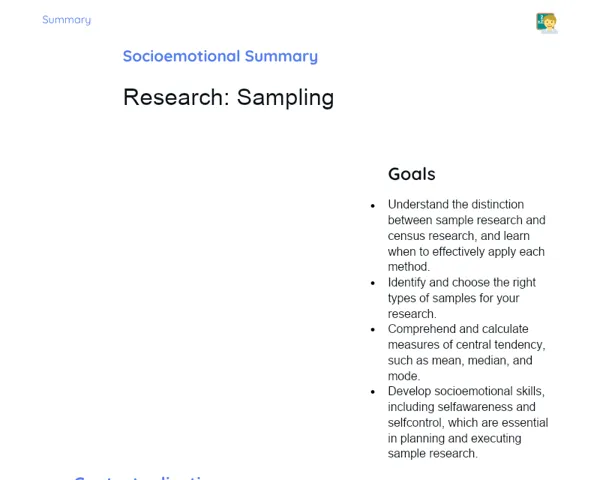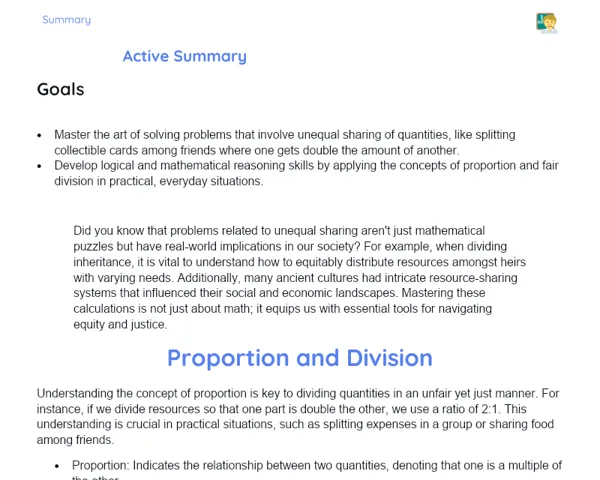Goals
1. Help students learn how to calculate and apply simple interest.
2. Enable students to find amounts and interest rates in the simple interest system.
3. Distinguish between simple interest and compound interest.
Contextualization
Simple interest is a fundamental concept in financial mathematics with real-life applications in many scenarios. For instance, when you take a loan, invest in a fixed deposit, or calculate returns on your savings, knowing simple interest becomes vital. Imagine you lend some money to a relative; understanding how to calculate how much they need to return after a set period using simple interest makes the entire process straightforward.
Subject Relevance
To Remember!
Concept of Simple Interest
Simple interest provides a way to calculate the increase of a principal amount over time, based on a fixed interest rate and defined period. The fundamental formula for calculating simple interest is J = P * i * n, where J represents the interest, P is the principal amount, i is the interest rate, and n is the time period.
-
Formula: J = P * i * n
-
Interest is only calculated on the principal amount
-
Commonly used in short-term loans and investments
Calculation of Amount
The total amount to be paid or received after a specific period is the combination of the principal amount and the accrued simple interest. The formula for calculating the total amount is M = P + J, where M denotes the amount, P is the principal, and J signifies the interest value.
-
Formula: M = P + J
-
The amount includes both principal and interest
-
Crucial for understanding total payments or receipts
Difference between Simple Interest and Compound Interest
While simple interest is computed solely on the principal amount, compound interest is calculated on both the principal and the interest accumulated over previous periods. This distinction leads compound interest to increase more rapidly compared to simple interest.
-
Simple Interest: J = P * i * n
-
Compound Interest: J = P * (1 + i)^n - P
-
Compound interest grows on both the principal and the previous interest earned
Practical Applications
-
Short-term bank loans, where banks utilize simple interest for calculating outstanding amounts.
-
Short-term fixed deposit investments, where the returns are based on simple interest.
-
Installment purchases at retail stores, where payments may include simple interest on the total product price.
Key Terms
-
Principal (P): The initial amount borrowed or invested.
-
Interest Rate (i): The percentage indicating the cost of borrowed money or the returns on an investment.
-
Period (n): The duration for which interest is calculated, usually in months or years.
-
Amount (M): The complete value combining the principal and the accumulated interest.
Questions for Reflections
-
How can understanding simple interest aid in managing your personal finances?
-
What are the pros and cons of using simple interest as opposed to compound interest?
-
How could knowledge of simple interest shape your financial decisions in the job market?
Personal Loan Planning
In this mini-challenge, you will apply your understanding of simple interest to plan a personal loan while considering a realistic scenario.
Instructions
-
Select a personal scenario where you require a loan for a specific purchase (for example, a new mobile phone, a laptop, or a holiday trip).
-
Determine the principal amount (P) of the loan you will need.
-
Research and select a reasonable monthly interest rate (i) for your loan.
-
Decide the loan duration in months (n).
-
Compute the simple interest using the formula J = P * i * n.
-
Calculate the total amount to be repaid using the formula M = P + J.
-
Prepare a brief written presentation detailing your chosen scenario, the calculations performed, and the final result.



